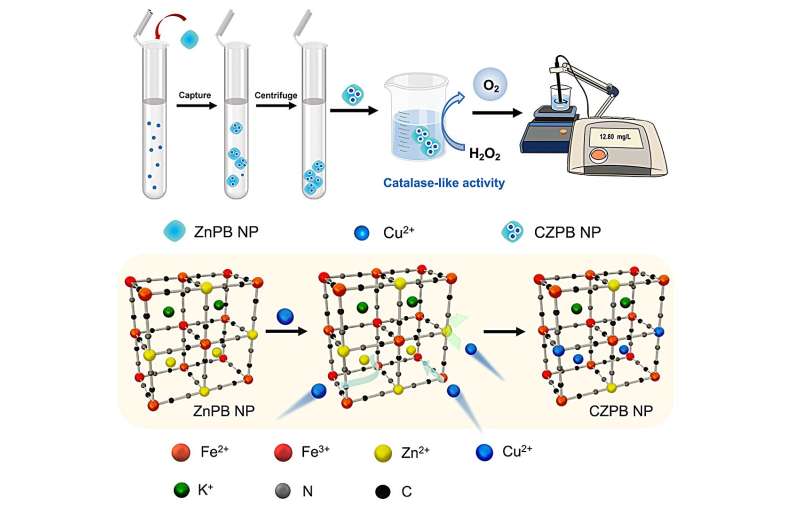Researchers led by Prof. Wu Zhengyan and Zhang Jia from the Hefei Institutes of Physical Science of the Chinese Academy of Sciences (CAS) have developed an all-in-one nanozyme for the capture, separation and detection of copper ion (Cu2+) in complicated matrixes, achieving accurate detection of copper ions. The study was published in the journal Small.
Copper is an essential trace element for the human body and an important component of agricultural fungicides. When copper accumulates to a certain concentration, it affects human health and soil quality. Given the important physiological role and potential hazards of copper, there is an urgent need to develop new methods for detecting copper ions in complex systems.
In this study, the researchers developed an all-in-one nanozyme based on zinc-doped Prussian blue nanoparticles (ZnPB NPs).
The signal generated by ZnPB NPs showed a positive correlation with the copper level due to the enhanced catalase-like activity of ZnPB NPs in the presence of copper ions. Consequently, the ZnPB NPs served as a comprehensive sensor for copper ions, offering a simple yet reliable solution to detect copper.
“It can efficiently capture, separate and detect copper ions with good selectivity and interference resistance,” said Yuan Xue, a member of the research team, “and can be used for the determination of copper ions in undiluted human urine and soil.”
Compared with the data obtained by inductively coupled plasma-optical emission spectroscopy (ICP-OES), this method has excellent copper ion detection accuracy while significantly reducing the cost.
This all-in-one nanozyme offered a viable and easy-to-implement solution for people in under-equipped areas and regions to monitor or evaluate copper levels associated with human and soil health status.


